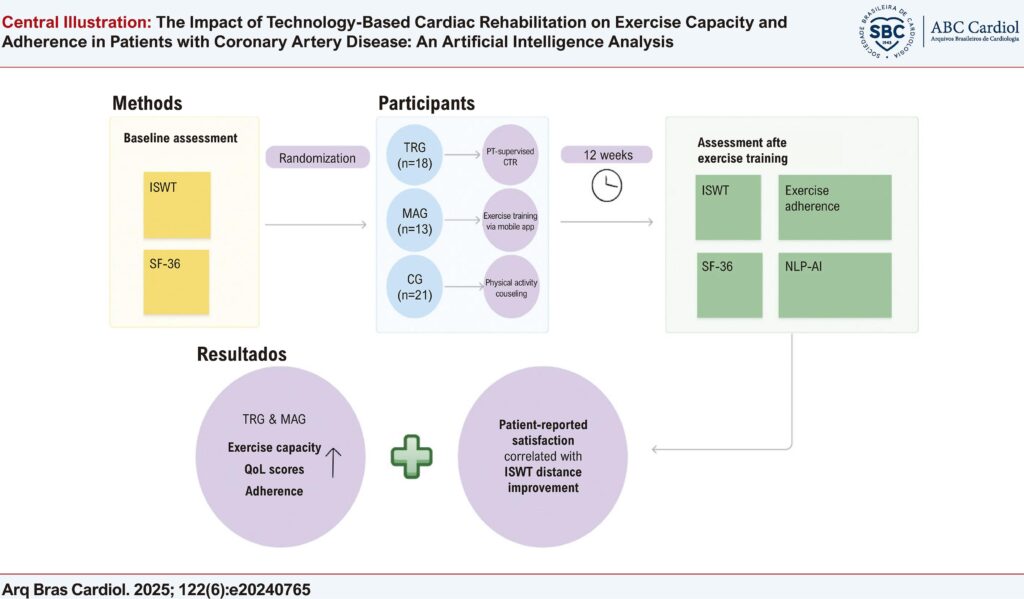Arq. Bras. Cardiol. 2025; 122(6): e20240765
The Impact of Technology-Based Cardiac Rehabilitation on Exercise Capacity and Adherence in Patients with Coronary Artery Disease: An Artificial Intelligence Analysis
This Original Article is referred by the Short Editorial "Adherence and Performance in Cardiac Rehabilitation: The Role of Technological Innovation".
Abstract
Background
Exercise training programs improve exercise capacity and quality of life (QoL) in patients with coronary artery disease (CAD). Although artificial intelligence (AI) has been used to design such programs, there are still few studies evaluating their effectiveness.
Objectives
This study compared the effects of technology-based and traditional programs for cardiac rehabilitation (CR) on exercise capacity and participation in patients with CAD using AI for data analysis.
Methods
A total of 52 patients with CAD were randomly assigned to three groups: i) telerehabilitation group (TRG) (n=18); ii) mobile application group (MAG) (n=13); and iii) control group (CG), which received only physical activity recommendations (n=21). TRG and MAG participants completed a 12-week program with calisthenic and resistance exercises three times a week. Exercise capacity was assessed using the Incremental Shuttle Walk Test (ISWT), and QoL was measured with the Short Form-36 (SF-36). Patient feedback was analyzed using a fine-tuned BERT-based natural language processing (NLP) model. Anomaly detection methods were applied to find mismatches between self-reported adherence and ISWT results. Statistical significance was set at p<0.05.
Results
Both TRG [44.4% female] (Δ=87.2±15.2 m) and MAG [50% female] (Δ=89.4±70.4 m) had significant ISWT improvements compared to CG [47.6% female] (Δ=10.9±28.2 m) (p=0.001). Adherence was higher in TRG (100%) and MAG (80%) than in CG (30%) (p<0.001). Patient-reported satisfaction, analyzed via NLP, showed a significant positive correlation with ISWT improvements (r=0.75, p<0.001). Findings show the potential of AI to support outcome assessment in CR.
Conclusions
Technology-based CR programs improve exercise capacity and adherence in patients with CAD, supporting the use of AI-driven tools. NLP analysis helped link patient feedback to exercise outcomes and detect inconsistencies, showing its value in enhancing CR evaluation.
540

